Related Research Articles
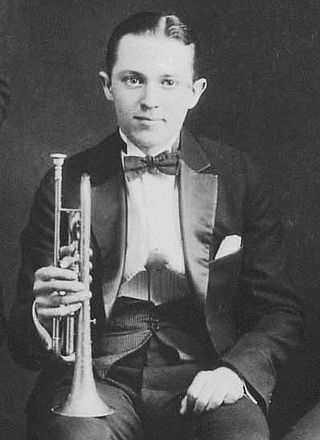
Leon Bismark "Bix" Beiderbecke was an American jazz cornetist, pianist and composer.
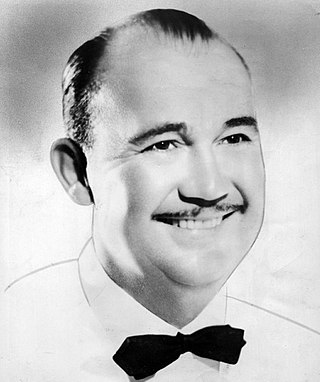
Paul Samuel Whiteman was an American bandleader, composer, orchestral director, and violinist.
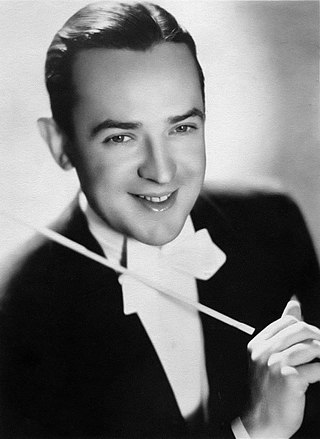
James Francis Dorsey was an American jazz clarinetist, saxophonist, composer and big band leader. He recorded and composed the jazz and pop standards "I'm Glad There Is You " and "It's The Dreamer In Me". His other major recordings were "Tailspin", "John Silver", "So Many Times", "Amapola", "Brazil ", "Pennies from Heaven" with Bing Crosby, Louis Armstrong, and Frances Langford, "Grand Central Getaway", and "So Rare". He played clarinet on the seminal jazz standards "Singin' the Blues" in 1927 and the original 1930 recording of "Georgia on My Mind", which were inducted into the Grammy Hall of Fame.
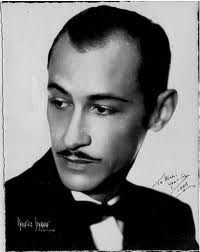
Orie Frank Trumbauer was an American jazz saxophonist of the 1920s and 1930s. His main instrument was the C melody saxophone, a now-uncommon instrument between an alto and tenor saxophone in size and pitch. He also played alto saxophone, bassoon, clarinet and several other instruments.
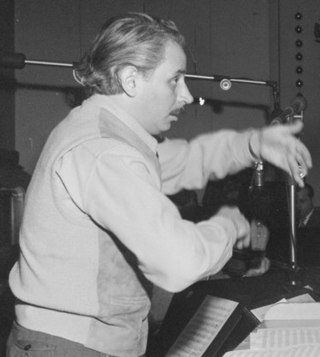
Leonard George Hayton was an American musician, composer, conductor and arranger. Hayton's trademark was a captain's hat, which he always wore at a rakish angle.
Frank Signorelli was an American jazz pianist.

The Rhythm Boys were an American male singing trio consisting of Bing Crosby, Harry Barris and Al Rinker. Crosby and Rinker began performing together in 1925 and were recruited by Paul Whiteman in late 1926. Pianist/singer/songwriter Barris joined the team in 1927. They made a number of recordings with the Whiteman Orchestra and released singles in their own right with Barris on piano. They appeared with the Whiteman orchestra in the film King of Jazz, in which they sang "Mississippi Mud", "So the Bluebirds and the Blackbirds Got Together", "A Bench in the Park", and "Happy Feet". They are best remembered for launching Crosby's solo career, one that would make him the greatest song charting act in history and one of the most influential entertainers of the twentieth century.
"You Took Advantage of Me" is a 1928 popular song composed by Richard Rodgers, with lyrics by Lorenz Hart, for the musical Present Arms (1928), where it was introduced by Joyce Barbour and Busby Berkeley as the characters Edna Stevens and Douglas Atwell. The characters were formerly married, but still have romantic feelings for each other. On opening night, Berkeley forgot the lyrics and had to scat and hum the entire second verse. Berkeley also claimed that his nonsense lyrics for the improvised second verse left Hart "almost apoplectic", but the audience was amused and Hart later forgave him. The song was subsequently included in the 1930 film Leathernecking, an adaptation of Present Arms.

"Mississippi Mud" is a 1927 song written by Harry Barris, first sung by Bing Crosby as a member of Paul Whiteman's Rhythm Boys. Its musical composition entered the public domain on January 1, 2023.
Joseph Anthony "Fud" Livingston was an American jazz clarinetist, saxophonist, arranger, and composer.

"Margie", also known as "My Little Margie", is a 1920 popular song composed in collaboration by vaudeville performer and pianist Con Conrad and ragtime pianist J. Russel Robinson, a member of the Original Dixieland Jazz Band. Lyrics were written by Benny Davis, a vaudeville performer and songwriter. The song was introduced by the Original Dixieland Jazz Band in 1920 as Victor 78, 18717-A, in a medley paired with "Singin' the Blues". The B side was "Palesteena". The ODJB recorded their instrumental version on December 1, 1920.
Liza (All the Clouds'll Roll Away)" is a song composed by George Gershwin with lyrics by Ira Gershwin and Gus Kahn. It was introduced in 1929 by Ruby Keeler (as Dixie Dugan) in Florenz Ziegfeld's musical Show Girl. The stage performances were accompanied by the Duke Ellington Orchestra. On the show's opening night in Boston on June 25, 1929, Keeler's husband and popular singer Al Jolson suddenly stood up from his seat in the third row and sang a chorus of the song, much to the surprise of the audience and Gershwin himself. Jolson recorded the song a few days later on July 6, 1929, and his rendition rose to number nine on the charts of the day.
Joe Tarto was an American jazz tubist and bassist.
Irene Taylor (1906–1988) was an American singer best known for her recorded work with Paul Whiteman. She was married to singer and bandleader Seger Ellis.
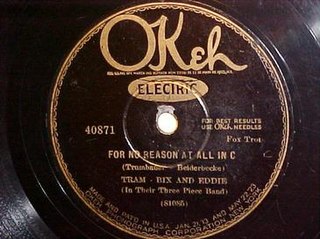
"For No Reason at All in C" is a 1927 jazz instrumental by Bix Beiderbecke, Frankie Trumbauer, and Eddie Lang. It was released as a 78 rpm single in 1927 on OKeh Records as by "Tram, Bix and Eddie ".

"Sensation Rag" or "Sensation" is a 1918 jazz instrumental by the Original Dixieland Jazz Band. It is one of the earliest jazz recordings. It is not related to Joseph Lamb's 1908 "Sensation Rag", which is a ragtime piano piece.

"At the Jazz Band Ball" is a 1917 jazz instrumental recorded by the Original Dixieland Jazz Band. The instrumental is one of the earliest and most recorded jazz compositions. It is a jazz classic and a standard of the genre.

"Singin' the Blues" is a 1920 jazz composition by J. Russel Robinson, Con Conrad, Sam M. Lewis, and Joe Young. It was recorded by the Original Dixieland Jass Band in 1920 as an instrumental and released as a Victor 78 as part of a medley with "Margie". The song was released with lyrics by vocalist Aileen Stanley in 1920 on Victor. In 1927, Frank Trumbauer, Bix Beiderbecke, and Eddie Lang recorded and released the song as an Okeh 78. The Trumbauer recording is considered a jazz and pop standard, greatly contributing to Frank Trumbauer and Bix Beiderbecke's reputation and influence. It is not related to the 1956 pop song "Singing the Blues" first recorded and released by Marty Robbins in 1956.

John Collins Fulton was an American composer, trombonist, and vocalist. At the age of 17, he started playing the trombone for small-town dances. He sang with the Mason-Dixon Orchestra. He also played the trombone and sang with the George Olsen Orchestra. He was part of the trio that sang on the 1925 number one hit "Who?" The other vocalists were Bob Rice and Fran Frey.

Donald Heywood was a Trinidadian-born American songwriter, composer, writer and director. He composed for "I'm Coming Virginia" in 1926, which became a hit for Ethel Waters. He became a prominent figure in black musical theater, and produced scores for films such as Moon Over Harlem (1939) and Murder on Lenox Avenue (1941).
References
- ↑ "Columbia matrix W142649. I'm coming, Virginia / Ethel Waters Singing Orchestra". Discography of American Historical Recordings. University of California, Santa Barbara. Retrieved December 19, 2024.
- 1 2 3 4 5 6 "I'm Coming Virginia (1927)". Jazzstandards.com. Retrieved 14 March 2017.
- ↑ Nicholson, Stuart (1 January 2000). Essential Jazz Records: Volume 1: Ragtime to Swing. A&C Black. p. 187. ISBN 978-0-7201-1708-0.
- ↑ "A Bing Crosby Discography". BING magazine. International Club Crosby. Retrieved August 27, 2017.
- ↑ "Victor matrix BVE-38135. I'm coming, Virginia / Paul Whiteman Orchestra". Discography of American Historical Recordings. University of California, Santa Barbara. Retrieved 14 March 2017.
- 1 2 Whitburn, Joel (1986). Pop Memories 1890–1954 . Menomonee Falls, Wisconsin: Record Research, Inc. pp. 256–257. ISBN 0-89820-083-0.
- ↑ Chronopoulos, Gene (April 2010). It All Started with Billie Holiday: A Memoir of Jazz. iUniverse. p. 23. ISBN 978-1-4502-0671-6.
- ↑ "Charlie Byrd:I'm Coming Virginia". AllMusic. Retrieved 14 March 2017.
- ↑ Billboard. Nielsen Business Media, Inc. 2 November 1974. p. 65. ISSN 0006-2510.
- ↑ Horricks, Raymond (1983). Stephane Grappelli, Or, The Violin with Wings: A Profile. Da Capo Press. p. 122. ISBN 978-0-306-80257-7.
- ↑ Simpson, Lewis P.; Stanford, Donald E. (1 March 1988). Selected Stories from the Southern Review. LSU Press. p. 80. ISBN 978-0-8071-1490-2.